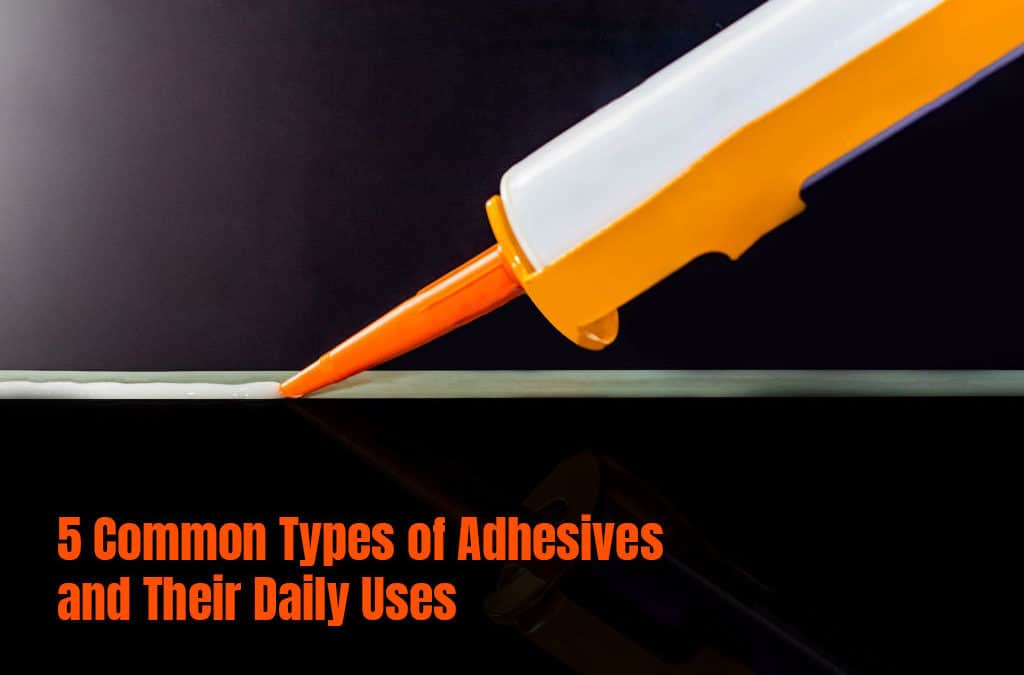Most people have household glue in their homes. It helps bind simple things together, like paper and other light items. However, when it comes to sturdier items that need fixing, you’ll need something stronger than household glue.
Many types of adhesives can do a better job or are more suitable than household glue. They all vary in chemistry (epoxies, polyimides), form (paste, tape, liquid), and type (pressure-sensitive, contact, hot melt). You must know the different kinds of adhesives and their uses so that you can ensure safety and reliability when using them for home repairs.
5 Common Types of Adhesives
For home repairs, you should stick with adhesives that are used for industrial construction. These adhesives and sealants have their own unique formula specifically designed for particular needs, like fixing coffee tables or repairing car windows. Read on to learn more about which type of adhesive is perfect for your needs.
1. Epoxy
Epoxies are known to be long-lasting, versatile, and heat-resistant. You can use it in almost any situation where you need to bond two things together, whether the materials are made of masonry, wood, plastic, or metal.
There are two types of epoxy adhesives: one-part (heat-cured) and two-part. One-part epoxies have a high heat requirement for them to cure (at least 200°F or 93°C). They are typically used in industrial projects, but not so much in general construction. You can use it to bond plastic materials and sensitive electronics.
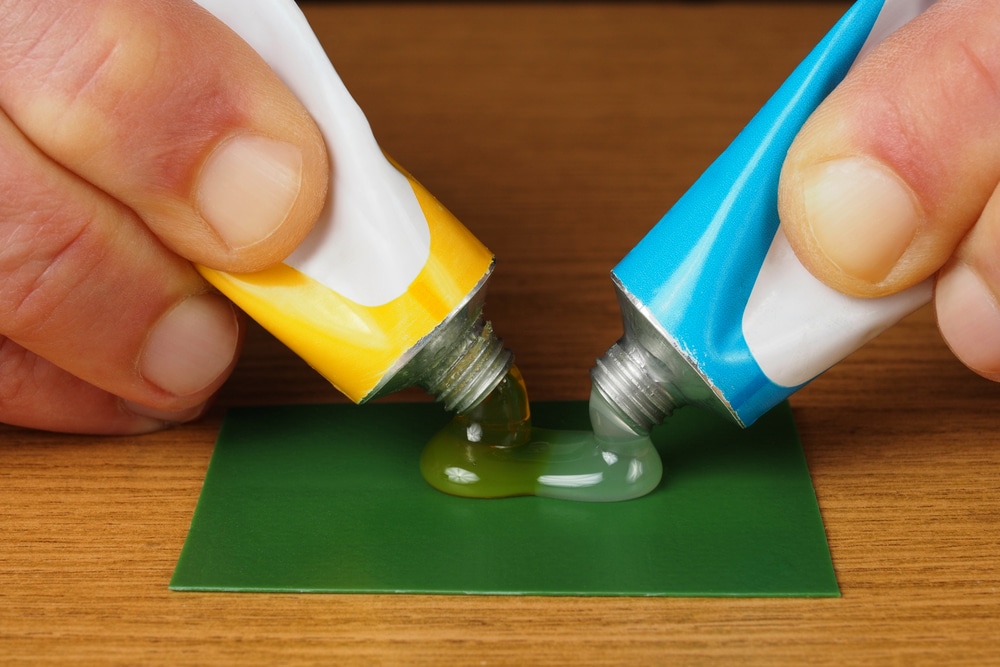
Two-part epoxies consist of a resin and hardener, which must be mixed before application.
On the other hand, two-part epoxies have two components. To use two-part epoxies, you’ll have to mix the resin with the hardener. Over 24 hours, it will transform from a thick liquid to putty and, eventually, into a hardened material. This type of epoxy is commonly used in boat building and construction projects like securing decorative moldings and attaching countertops.
Some examples of epoxies include Weicon F2 Epoxy Resin, Permatex Water Bond Epoxy, and Permatex Plastic Bond Epoxy, all available at the Simplex online store.
2. Cyanoacrylate, A.K.A. Superglue
Cyanoacrylate is a group of adhesives that bond very quickly. It has a very strong bond and its tensile strength can reach up to 4,000 psi. However, even though it’s known for its strength, superglue is typically used in small repairs rather than large building projects.
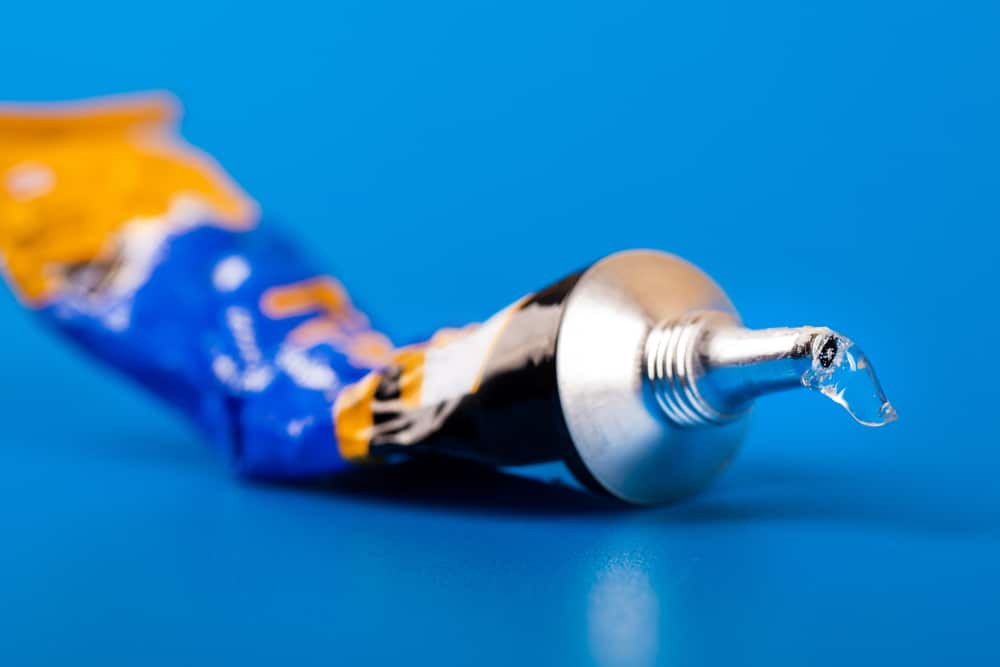
Superglue is a high-strength adhesive that dries almost instantly, making it ideal for small repairs.
Cyanoacrylate’s adhesives form polymeric chains in the presence of moisture which means that once you open a superglue container, it doesn’t take long for water to come in and cure the whole tube. It has a fast set time and low ductility (brittle bonds that react poorly to impact). This quality of super glue can also be the reason why it isn’t used in big projects.
To use superglue, all you have to do is squirt a small amount of it on the surface you want to bond to. Then, hold it in place for a while to help it set. Ideally, it’s best to leave it for 24 hours for the item to cure fully.
3. Hot Glue
Hot glue, or the glue used in glue guns, is also considered craft glue. However, it’s not a type of adhesive that children can use. Depending on the variety, hot glue can melt from 250°F (121°C) to 380°F (193°C). One of its standout features is its high viscosity. With hot glue, you can bind uneven surfaces together and even fill in their gaps.
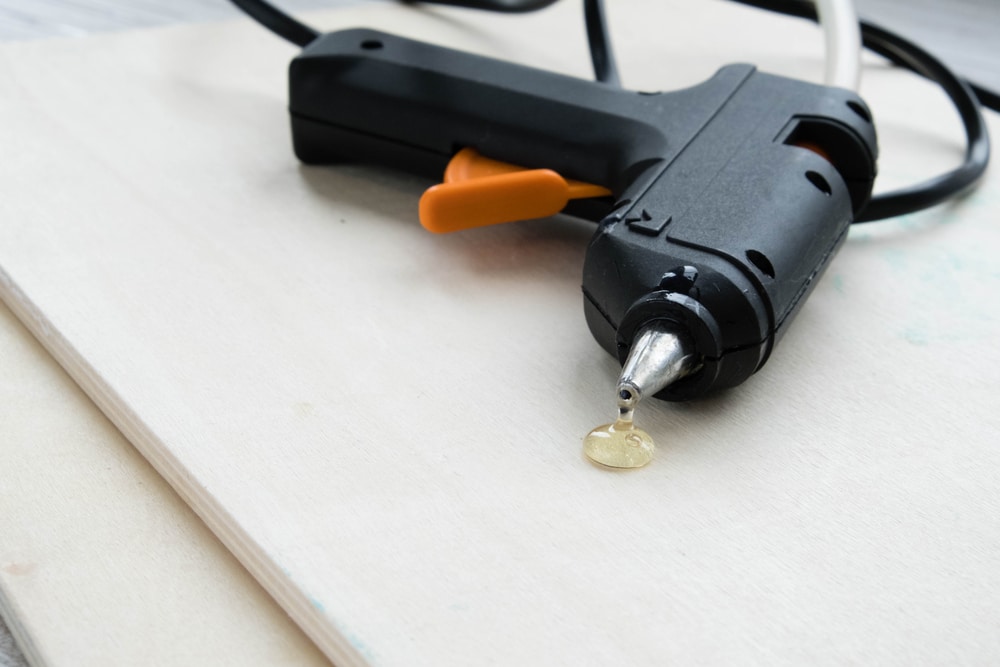
Hot glue dries quickly but is not suitable for high-temperature applications.
You don’t usually use hot glue for high-strength applications since it doesn’t do well at elevated heat temperatures. However, it’s a great choice if you want to glue something quickly. Hot glue sets fast, which is why it’s commonly used in adding embellishments to headbands and picture frames.
4. Wood Glue
Wood glue or white glue is a type of PVA. However, unlike fabric glue, wood glue is stronger. Its ingredients contain a rubbery polymer that forms hard bonds as it dries. This feature makes it ideal for binding wood materials as it seeps into the fibers and creates a strong bond as it hardens.
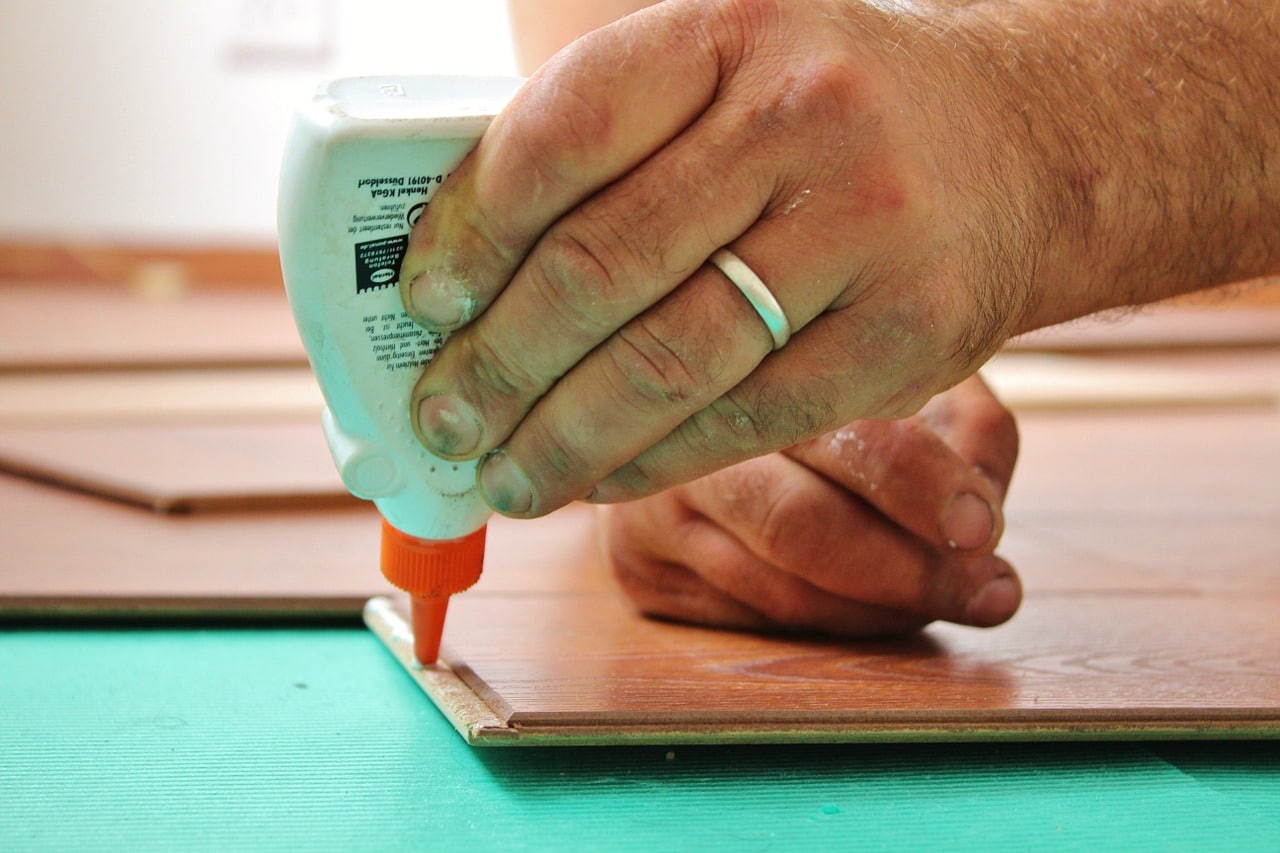
Image by Ulrike Mai from Pixabay
Curing PVAs can take a long time because the process involves driving out moisture rather than using water in the air to cure. It may help if you don’t disturb the curing process of PVAs, or else the bonds will break, prolonging the process.
Wood glue comes in multiple varieties and colors. There are kinds that you can use for indoor and outdoor carpentry projects. When working with wood glue, remember to use a clamp for about 30 minutes to an hour to help bond the wood. The curing time of wood glue is usually about 18 to 24 hours.
5. Craft Glue
Craft glue is one of the most common types of adhesives you can find in your home. It comes in spray adhesives, pressure-sensitive adhesives (packaged in sheets or dots), and fabric glue.
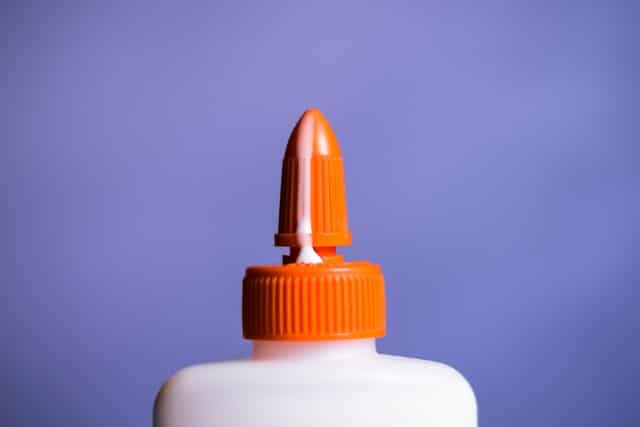
Photo by Scott Sanker on Unsplash
This type of adhesive is perfect for small projects with lightweight materials like cloth, paper, cardboard, and crafts. Craft glue has water as its carrier, which is why it’s easy to clean up and low in toxicity. To use this type of glue, you must hold the bonded items in place to set the adhesive. It usually takes an hour for it to set and 24 hours for it to cure fully.
Fabric glue, even though it’s a type of polyvinyl acetate (PVA), is considered craft glue because it lacks the strength of construction-grade adhesives. With this, you should only use fabric glue for craft projects and not for building tasks.
Stick to High-Quality Adhesives
Different kinds of adhesives have their purpose and ideal usage. Sometimes, one type of glue doesn’t fit all situations. There’s a specific adhesive for furniture making, pottery repairs, and bookbinding. Regardless of your project, the outcome will boil down to the kind of adhesive you’re using and its quality.
Stick to high-quality adhesives with Simplex, the premier supplier of adhesives, sealants, and other high-quality industrial and engineering parts made from various kinds of materials. Browse our shop today to get started!

